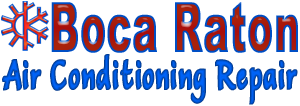How to Make Your Attic Insulation Airtight to Reduce Your Energy Bills
When you do your energy audit to find out exactly how the energy you pay for is being utilized within your house, you could be shocked that almost 50%of your heating and cooling bill is directly related to the insulation of your attic. The U.S. Department of Energy undertook such a research and found out that houses with poor attic insulation spent more on energy bills than those whose insulation was as per the standard.

Many times when a homeowner considers home improvements and renovation, the attic isn’t usually included in the budget and hence untouched during the entire process. This is not proper because the attic is one of the crucial parts that should be factored in whenever a discussion about energy efficiency within your home is held. The following attic insulation issues must be closely examined if you are to tame your skyrocketing energy bill.
Unblocking Areas of Ventilation
For purposes of cooling, ventilation areas may at times be blocked by debris of different sizes and forms. This blockage may be due to shoddy insulation work or simply wear, tear and time. These ventilation areas usually play an invaluable role in maintaining constant and proper airflow. Blocking them effectively creates pockets of heated air which eventually flow into your home making it difficult to keep your home cool.
Replacing Your Aged Insulation
Based on its positioning and the exposure to elements the insulation faces, it may accrue damage from water with time. This is particularly the case if your roof is leaking or it was done in a substandard manner. An aged or rotten insulation can create temperature leakages that can expose you to adverse weather conditions hence the need for replacement.
Installing Floor Insulation
One of the easiest ways of getting added temperature protection is through floor insulation. However, some home buyers may not be careful enough to check whether the floors of the houses they are buying are insulated or not. Usually, the spaces between the slats can act as temperature leakage points if not well sealed. If your home doesn’t have floor insulation in place, it’s time you considered installing one.
Why You Should Care about Your Attic Insulation
Proper insulation of the attic area will reduce the heat exchange between your indoor and the outside environment. This will keep your house warmer during winter and cooler during summer. Improperly done or problematic attic insulation can also eat into your funds due to overworked HVAC systems which consume lots of energy or breakdown frequently meaning additional expenditures in repairs.

